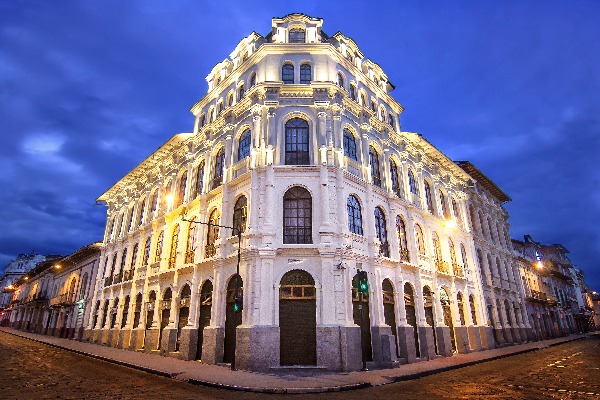The ‘Mountain of Light’ in Imbabura Province is a living laboratory for more than 30,000 plants

Formerly known as San Juan Hill in Imbabura Province, at 2,240 meters (about 7,350 feet) above sea level, is now called the “Montaña de Luz”, or Mountain of Light.
By Susana Madera
What once was a rugged mountain, covered with weeds and bushes, now has been transformed into a “living laboratory” with some 30,000 plants of assorted species and varieties planted on some 40 hectares (100 acres) in the Pablo Arenas parish in Ecuador’s Imbabura province.
Formerly known as San Juan Hill, the site at 2,240 meters (about 7,350 feet) above sea level is now called the “Montaña de Luz” (Mountain of Light) and is a place where the bushes have been replaced with 3,700 fruit trees of 50 varieties, 600 bamboo plants of nine varieties and 900 palm trees of 27 varieties.
Moreover, 600 conifers of 26 varieties, 300 fringetrees, 300 agave plants, assorted succulents, aloe vera and cacti, around 1,000 orchids and the same number of bougainvilleas in 25 colors, among other plants, are to be found on the hill.
Although it’s still under construction, so to speak, the creators of the Montaña de Luz community want to make the site one of the largest and most biodiverse botanical gardens in the Andes, thus providing Ecuador with one of the largest living laboratories to delve into and emphasize the importance of protecting and conserving nature.
The plan is to transform the area into a center to educate people about the importance of plants and the proper management of natural resources, and already visitors can stroll through various themed gardens: For instance, the Zen garden, the orchid garden, the desert garden, the garden of silence and even a shamanic garden, in strolls lasting up to 90 minutes, community member Sara Hurtado said.
With the aim of contributing to preserving plant genetic resources and supporting the sustainable use of plant species, it has taken the Montaña de Luz creators about six years to build roads and reservoirs in the area, as well as to replant the hill.
“These are areas with a lot of anthropic pressure, which have suffered heavily from deforestation, the clearing of vegetation via lumbering to make charcoal, to harvest wood or to create open spaces for cultivation, which also brings in other processes like the loss of soil by erosion,” Spanish geologist German Martin said.
This is why, he said, the reforestation process is being undertaken, since this “prevents erosion, traps nutrients in the soil, brings in wildlife and that helps maintain the entire trophic network.”
“The great number of plant species has helped a large number of animals, which were already abandoning (their habitats) or were declining in numbers,” to find a “refuge where they can proliferate,” he said amid the colorful vegetation and assorted birdsongs from all around.
A common sight in the area are wild rabbits.
Carlos Merizalde, formerly the director of International Cooperation of the Imbabura UNESCO Global Geopark, said that, up until six years ago, San Juan Hill was just “a naked mountain, practically deforested” until Marcelo Vinueza arrived “with ideas of conservation, community development, different local development” – such as ecotourism, eco-spirituality, healthy eating and more.
Then, the hill “began to repopulate with an interesting variety of plants, a wide variety, very pleasant, and little by little the hawks, eagles, kestrels and rabbits have returned, and this is specifically the result of this growth, this flourishing of biodiversity in this area,” he said.
Merizalde believes that the Montaña de Luz currently may be the most biodiverse botanical garden “in (terms of) projects or initiatives of this kind in the Andean area of Ecuador.”
In addition, “people who come to enjoy this natural environment find a space of peace, tranquility, fresh air,” he said, emphasizing that the development is progressing with criteria of sustainability, resilience and identity in mind “because here we talk about geology, biodiversity, culture,” spirituality and healing.
“Fortunately, little by little, people and entities are understanding that this change in behavior is not dependent on others, but rather on oneself,” he said.
At times, you have to be “a little bit crazy, in the good sense of the word, to launch these initiatives that do good for the community, for the area,” he said of the site where each action seeks to promote environmental education that fosters changes in the behavior of visitors for the benefit of nature.
__________________
Credit: La Prensa Latina





















